So long, Mexico. It’s been quite the journey!
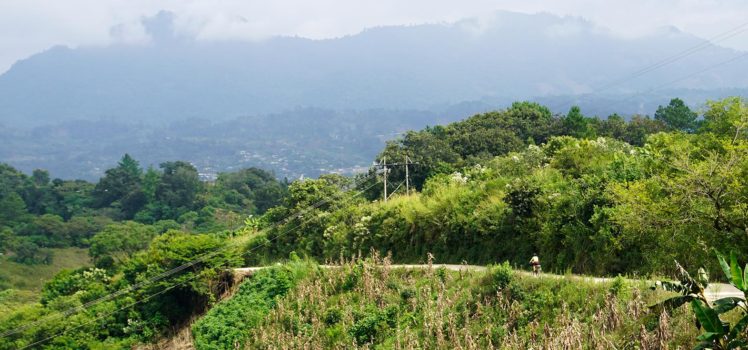
Having had more than our fill of busy highway riding during the last stretch of our journey, we were more determined than ever to find an out-of-the-way track before it was time to say “So long, Mexico.” As luck would have it, our friends Mark and Hana had already done all the complicated work by plotting a largely back-road route from San Cristobal to the border. We knew that we could just follow in their tire tracks (or GPS track as is actually the case) but knowing that they virtually never take the easy road, committing to their route was not a decision that we made lightly. We read the route report on their blog several times and even spoke with them directly about it. Given Mark’s assurance that it was “not too tough,” I figured that I could tolerate a certain level of suffering to avoid the fast-moving cars and trucks on the busier roads. Was there suffering? You bet, mostly in the form of hills that went on and on and on. The flip side, of course, is that there was also some incredible scenery and cool experiences too!
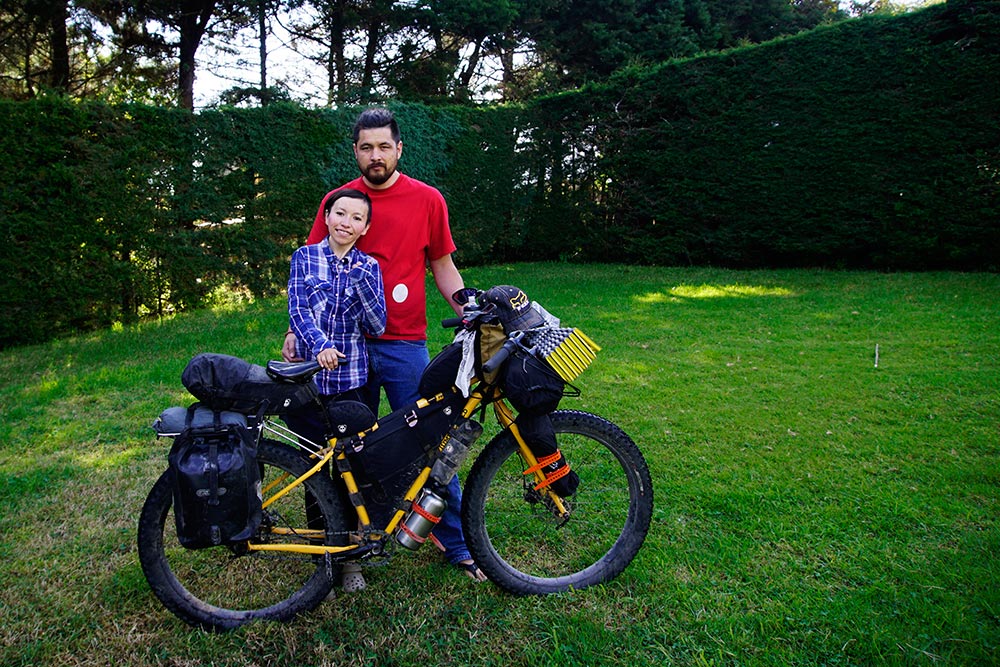
Martin and Corina, our generous hosts in San Cristobal.
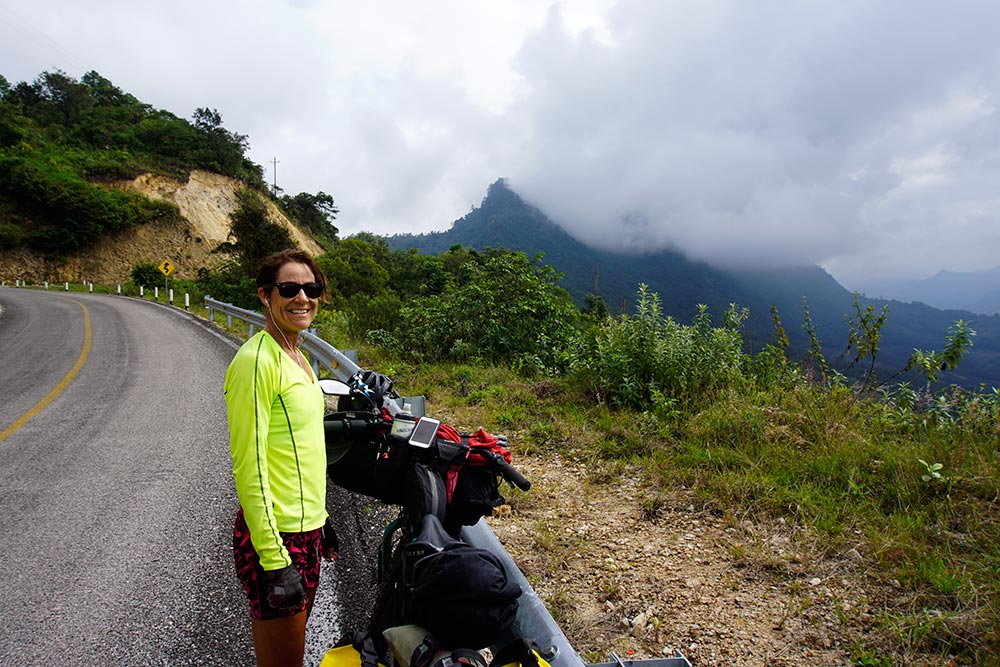
One of many breaks on our climb out of San Cristobal.
Our hosts in San Cristobal were Martin and Corina who had only just relocated there from Mexico City a few weeks before our arrival. Amusingly, Martin was one of the hosts that Rebecca had contacted via Warmshowers when we were first approaching Mexico City. Ultimately, we never ended up staying with him because he was in the process of moving but when it came time to look for a place to stay in San Cristobal, Rebecca never made the connection that she had already spoken with him but Martin did remember.
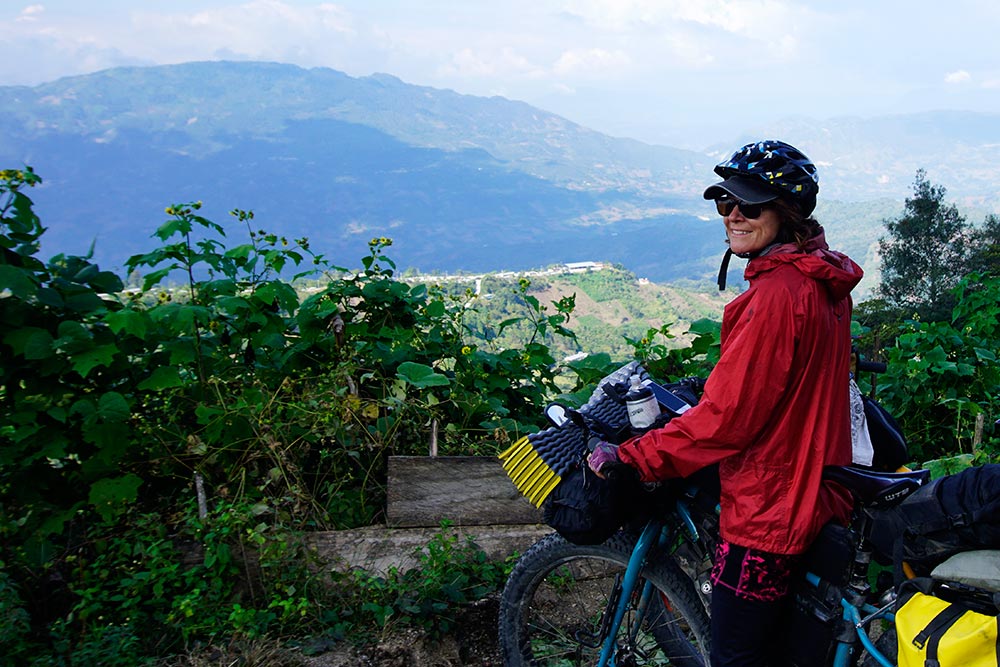
Not far from our first night’s stopping point, San Juan Cancuc.

Our legs get a big workout while cycling but our upper bodies do not.
Both Martin and Corina were great hosts and we enjoyed the short amount of time that we were able to spend with them. Having traveled all the way from Calgary, Alberta to Ushuaia, Argentina, Martin had quite the epic cycling tour himself, As you can imagine, we were all ears when he shared some of the details of his trip.
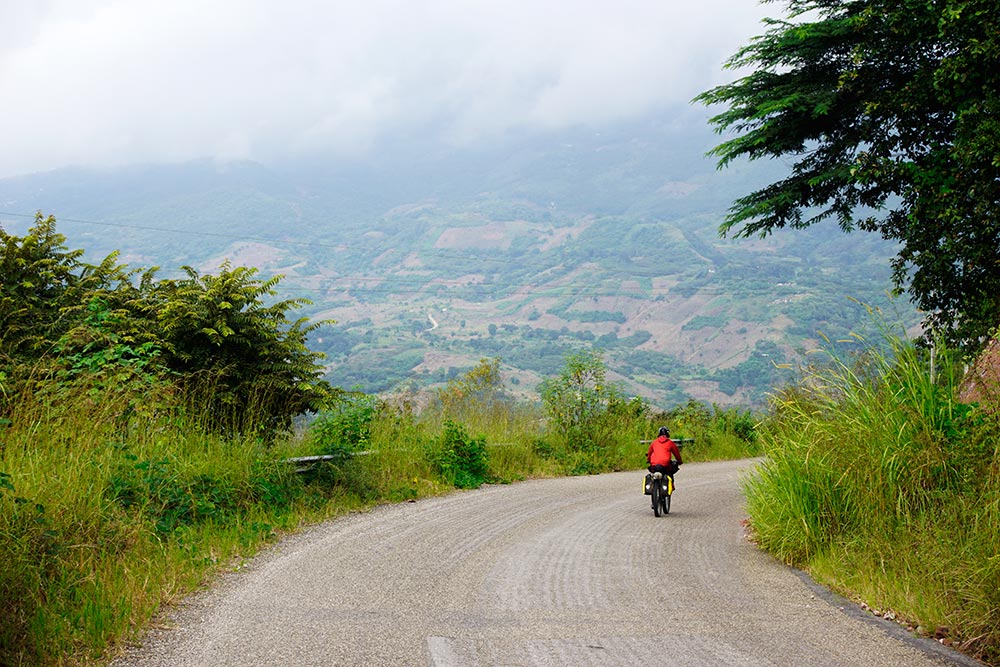
A big descent outside of San Juan Cancuc.

We started climbing again just after crossing this stream.
I’d like to say that we were able to see a lot of the city but that isn’t really the case. We did make our way downtown to explore the area around the Zocalo a bit. It was there that we actually got ourselves into a bit of trouble.
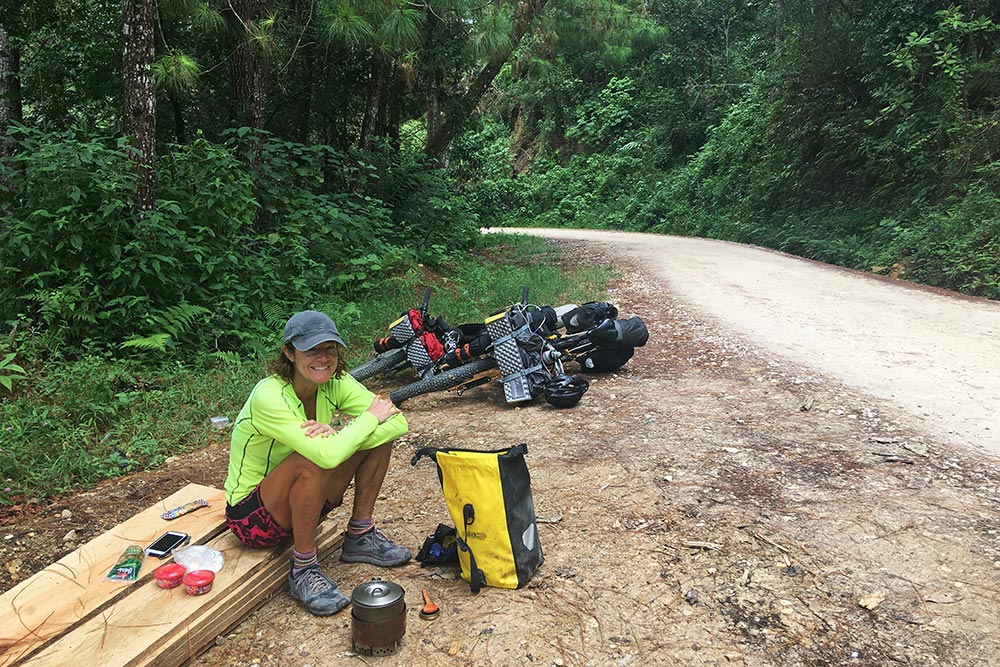
Cooking pasta on the side of the road, a very cycl-ish activity.

Passing through one of many small villages.
Have you ever eaten a meal in a restaurant only to find out after finishing that you had no way to pay? That was us in San Cristobal. As I mentioned in my last post, when Martin and Corina met us in Tuxtla Gutierrez, we offloaded a bunch of our gear to make our climb to San Cristobal a bit easier. When I was shuffling gear around to do that, I moved all of my money and credit cards from the spot that I normally keep them in my bike’s frame bag. When we went out exploring that day, I had neglected to put my money back where I normally keep it so unbeknownst to me, we were virtually cashless, save for the few pesos that I had in my pocket. To make matters worse, that was the one day that Martin had forgotten his telephone at home so we couldn’t even contact him to come rescue us. Fortunately, the owner of the Lebanese restaurant was extremely kind and had no problem allowing us to leave with only our promise to return and pay the next day. I was kind of happy that it did happen because it gave us an excuse to return there and have a second great meal. Seriously, it was that good!
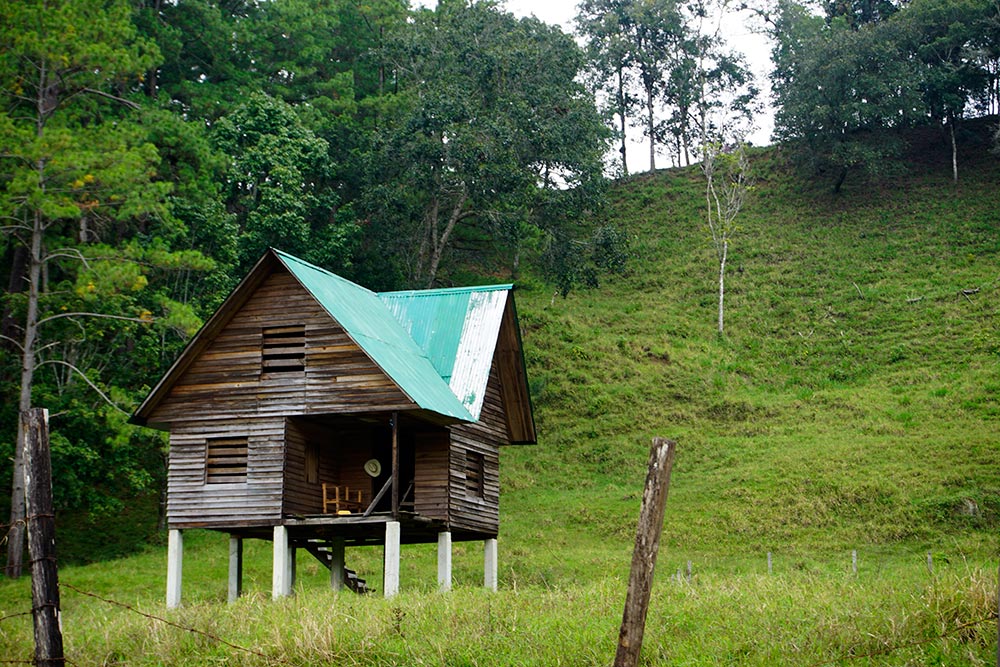
Tiny houses are popular these days, and this one looked pretty cool.
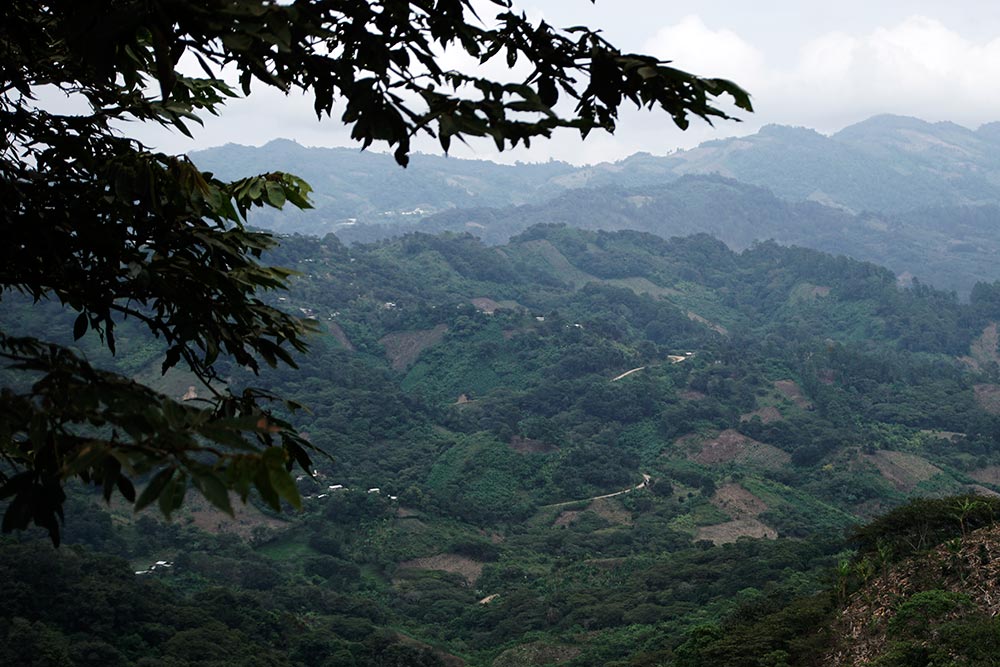
See that road in the distance? We were on it not long before this photo was taken?
When we checked the elevation profile for our ride out of San Cristobal, we could see that there was a bunch of climbing that needed to be completed early on in the ride. What we weren’t expecting was that much of that would take place before we even left the city. The roads leading from San Cristobal were amazingly steep and while winching our bikes up them in first gear, we had to stop multiple times to rest or to shed layers of clothing.

I wish all paved roads were this scenic and quiet.
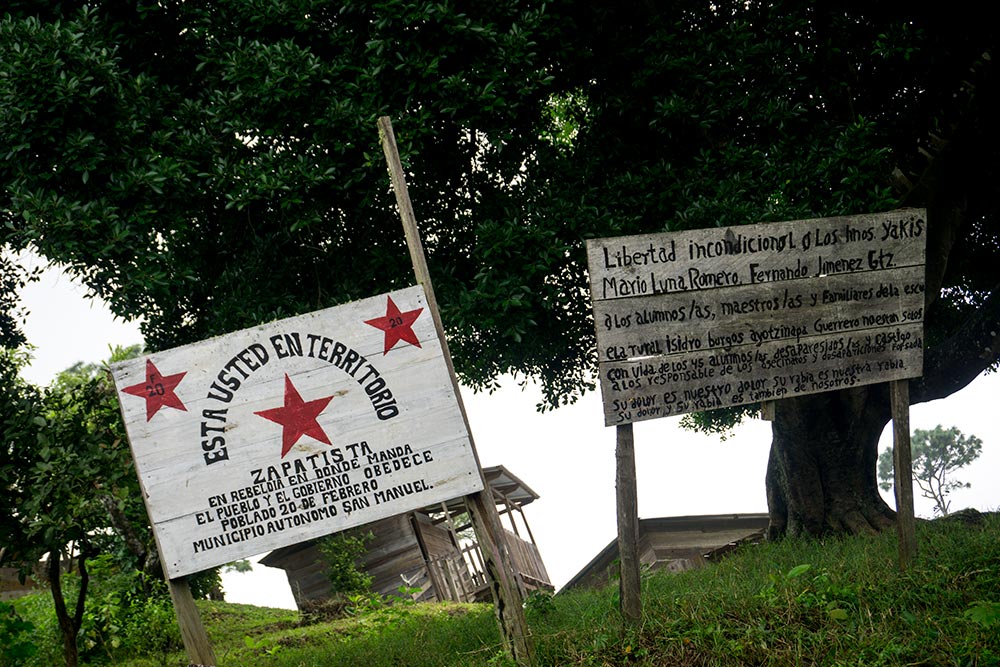
You are in Zapatista territory!
As we all know, hills and mountains have more than one side so after climbing for some time, we were rewarded with a fast descent. This pattern of up and down would be repeated for the entire day, netting us a huge amount of accumulated climbing with an actual decrease in elevation.

So many beautiful horses. I struggle to not photograph them all.

In rebellion against state and government.
Knowing that Mark and Hana, the couple whose route we were following, are typically able to cover a lot more distance than us, we were surprised to find ourselves at San Juan Cancuc at the end of the day, the same sad town that they had written about staying in (be sure to check out their post). The description on their blog was accurate, it is a town with few redeeming qualities. A number of the streets were lined with garbage and although the majority of people in the town were friendly, there was also a number who were very obviously drunk, a sight which we have not witnessed elsewhere. Coincidentally, the alcoholic beverage of choice there is called Pox (posh) and as a novelty, Martin had purchased a small bottle so that we could all have a taste of it. Verdict? I’ll stick to vodka!

Ecoresort adjacent to the Toniná archeological site.
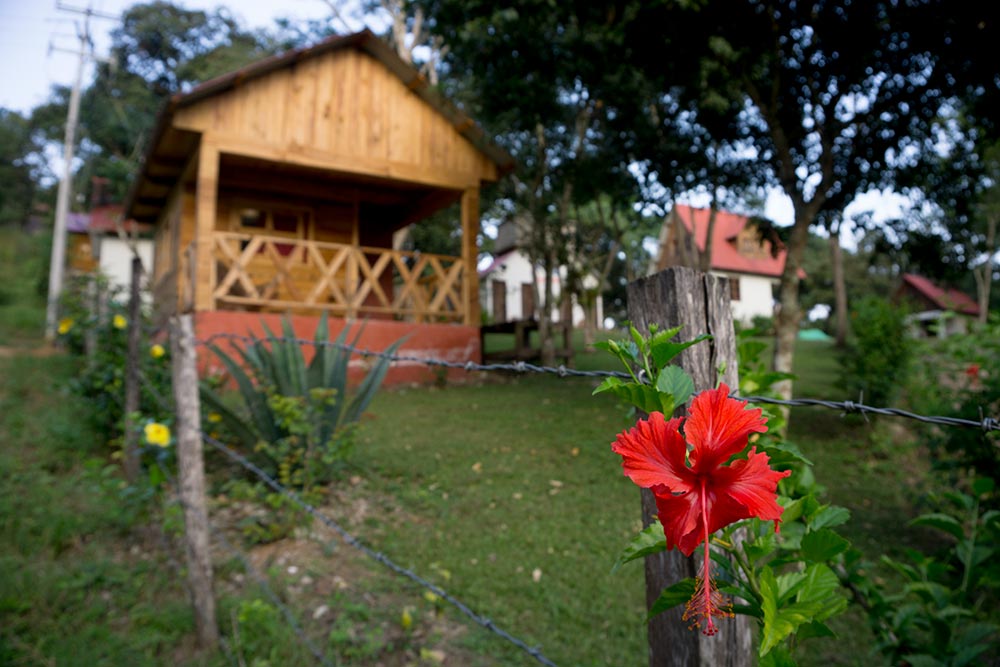
Cool little cabaña that we stayed in.
The following day, we left our dingy hotel room early. In truth, calling it a hotel is a huge stretch but it’s the word I think most of you would associate with a place where you pay to sleep. In spite of our early departure, there were still men on the side of the road passing around a bottle of pox as we exited. Truly sad. On the bright side, the people who were not so affected smiled and waved as we rode out of town.

Making our way into the Toniná archeological site.

The site is very large!
After a long and beautiful descent into the adjacent valley, we began climbing once again only this time, there was no more pavement, only rough dirt roads to ride upon. The steepness of the grade and the loose stones forced us to dismount and push our bikes on numerous occasions. Fortunately, we had the pleasant scenery and some motivational podcasts to keep our minds off our strained legs and lungs. It was also hard to complain when we saw people, often women and children, struggling up the same steep roads carrying huge bundles of firewood. A tough life, without a doubt.

I didn’t even have to prompt her to do this. 🙂

It was readily apparent that the villages we were traveling through did not see a lot of tourist traffic. While we still had plenty of warm smiles and greetings, we also received a number of looks I interpreted as, “What the hell are you doing here?” It’s only fair, I think, considering we were as curious about the villagers as they were of us. With each passing village, it seemed as if the native dress of the people would change, all of them quite different than what we had observed in the other Mexican states.

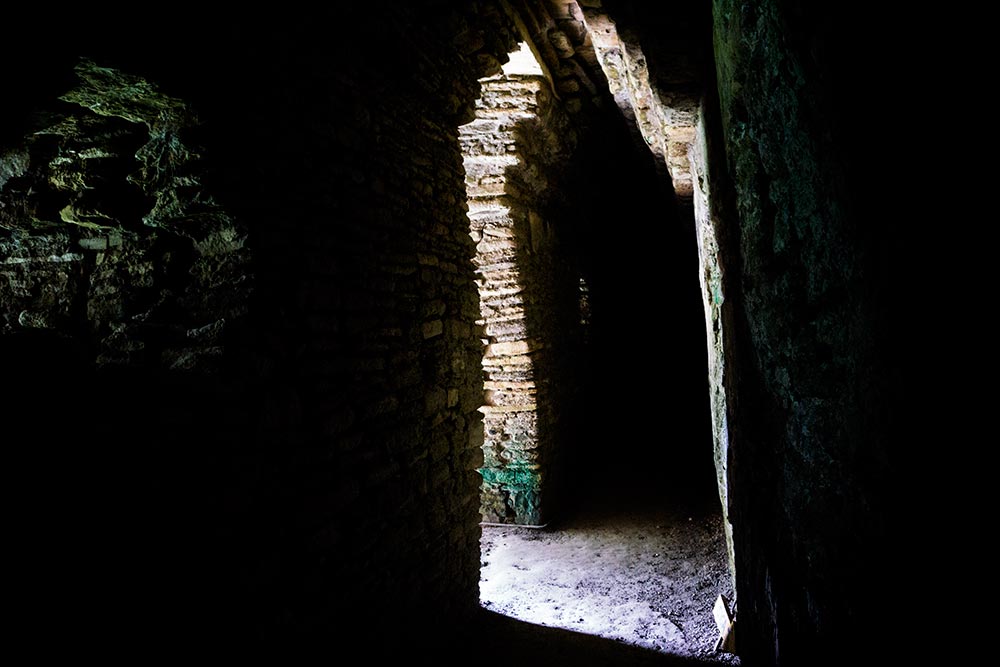
We held up that evening in Ocosingo, both the city and the hotel we slept in nicer than the previous night’s. We slept well knowing that the following day we had only a short ride ahead of us.
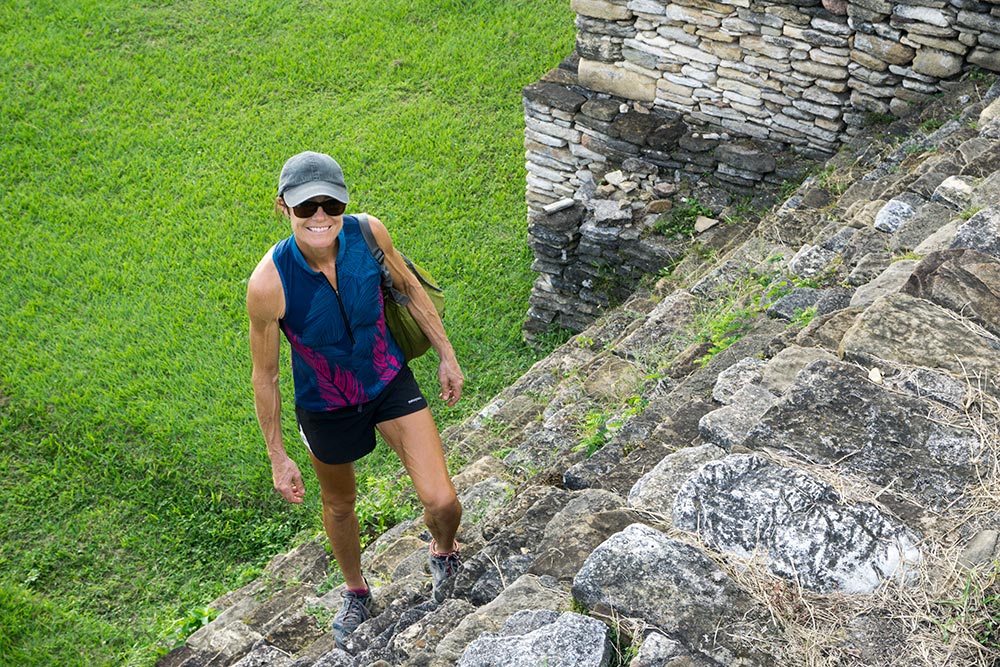
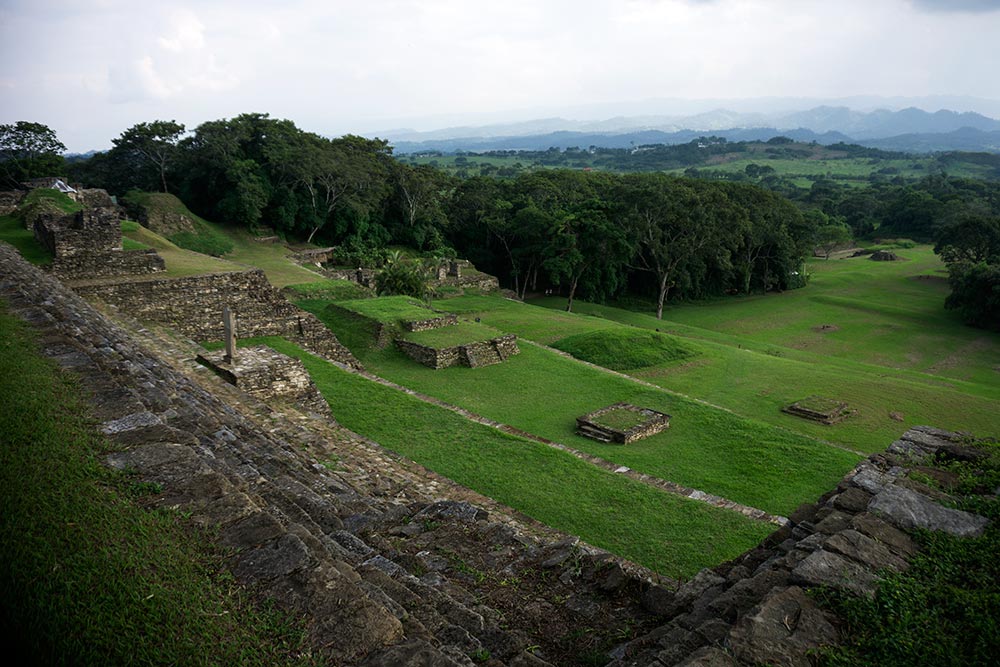
From Ocosingo, we rode only as far as Toniná, just 14 km away. Our destination was an ecotourism resort, walking distance from the Toniná archeological site. While we had initially planned to camp there, the quaint looking cabañas and the threat of rain encouraged us to seek more solid shelter. Had we been aware that our friends had discovered a large scorpion in one of the cabañas when they slept there, we might have chosen differently. Just kidding, the cabañas were great. 🙂

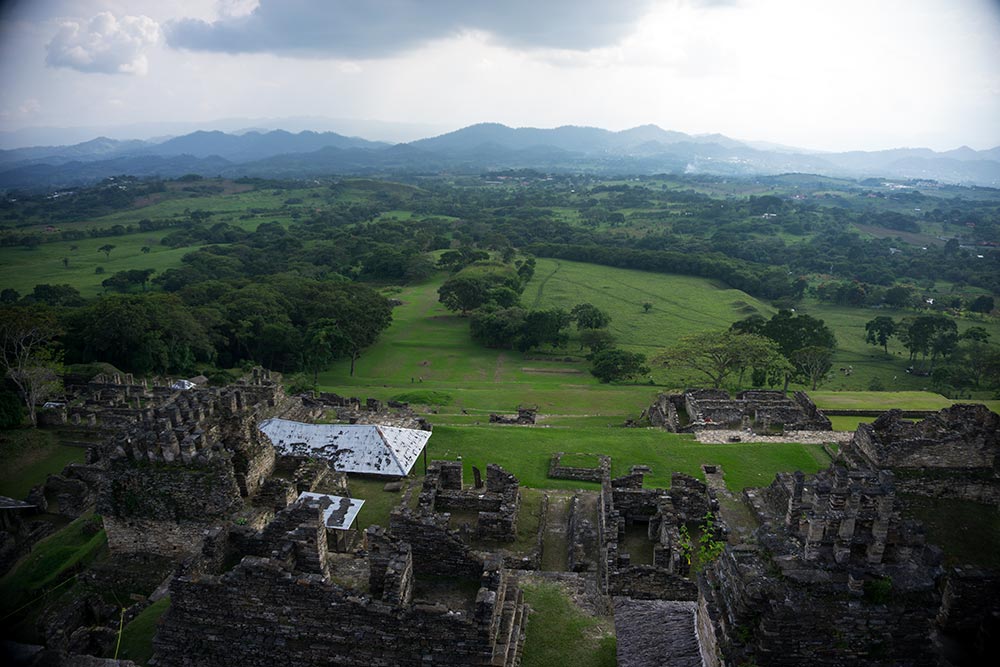
The archeological site at Toniná was extremely cool to explore. Coming from Canada, it’s still hard to reconcile how little safeguards are in place at some of these locations. We were able to climb all the way to the top of the pyramids on steps more narrow than the average adult’s foot, a feat that would definitely not be permitted in Canada nor the USA. I don’t disagree with it, of course, but I do find the difference humorous.
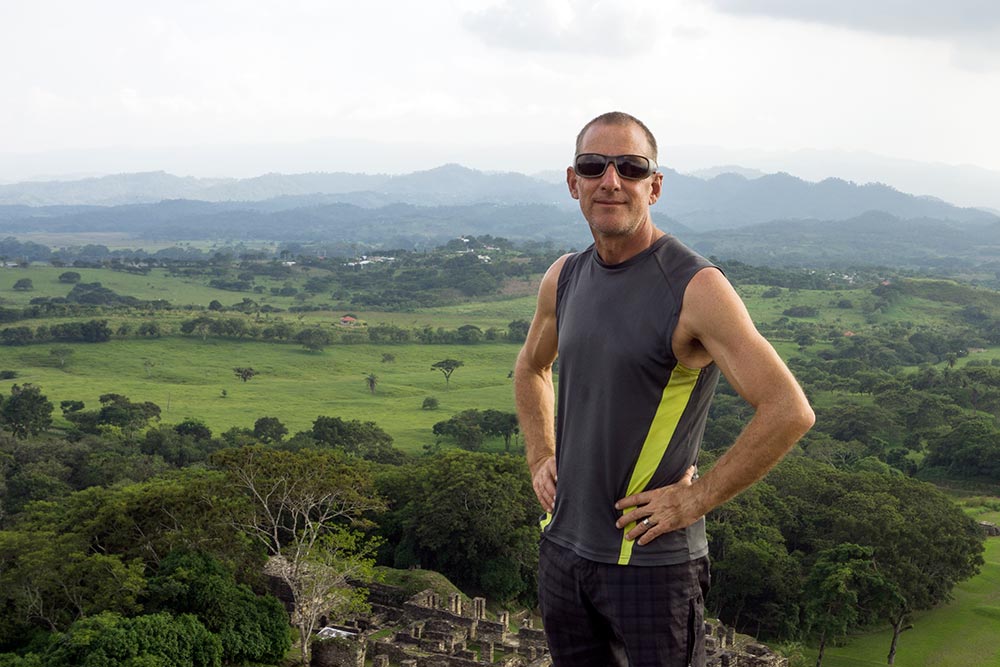

Our route from Toniná to Nahá, our next planned stop, was a rollercoaster similar to what we had been experiencing so far on this leg of our trip. Fortunately, the hills were a bit shorter and also less steep, lessening the number of times that we had to dismount and push our bikes. Regardless, it was still a very long day and the sun was ready to set as we arrived at the ecoresort where we had planned to camp.
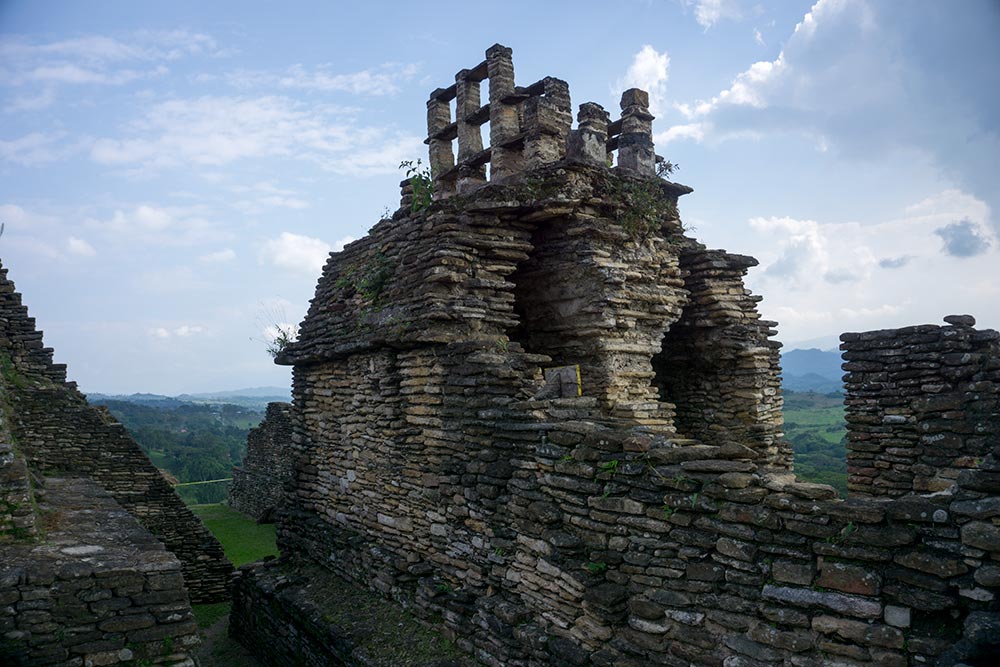

Badly in need of food, we went out in search of something to eat before setting up our tent. Unfortunately, just as we were leaving the restaurant to make our way back to the resort, the skies opened up, soaking us thoroughly. Although the resort was full, all of the rooms having already been occupied by a large tour group, the staff took mercy on us and allowed us to “camp” in one of their conference rooms instead of outside in the rain. Cool, right? We not only had a dry place to sleep but also had access to electricity so that we could recharge our electronics. The only funny part about this is that the light switch for the room we were staying in was located in an area that we had no access to so we had no way of turning off the lights when we went to sleep. I remember waking up just before 11:00 PM and given how bright it was, thinking that I had slept the entire night and that it was time to get up.


Sketchy, right?
We’ve learned that the information we receive from motorists concerning the quality of a road, and more specifically, the presence or the absence of hills, is next to useless. As we again navigated a series of steep hills that day, we laughed about the information that we had received from a local at breakfast time, telling us that it was all downhill from Nahá. We may have been losing elevation but we still did a hell of a lot of climbing!


Nueva Palestina was our stopping point that night. The inexpensive hotel we found to stay in, and the tacos we filled our bellies with, were both better than what we had found at several other locations along the way. Interestingly, it almost seemed as if the town was “dry,” as in, no alcohol available. We did find a few vodka coolers, hidden away in the refrigerator of one of the small shops, but that was it in terms of alcohol. There were no bottles of tequila or mescal on the shelves, nor was there even beer to be purchased. Given what we saw in San Juan Cancuc, perhaps the absence of alcohol is a good thing?!
Note: Yes, we bought the coolers! 🙂
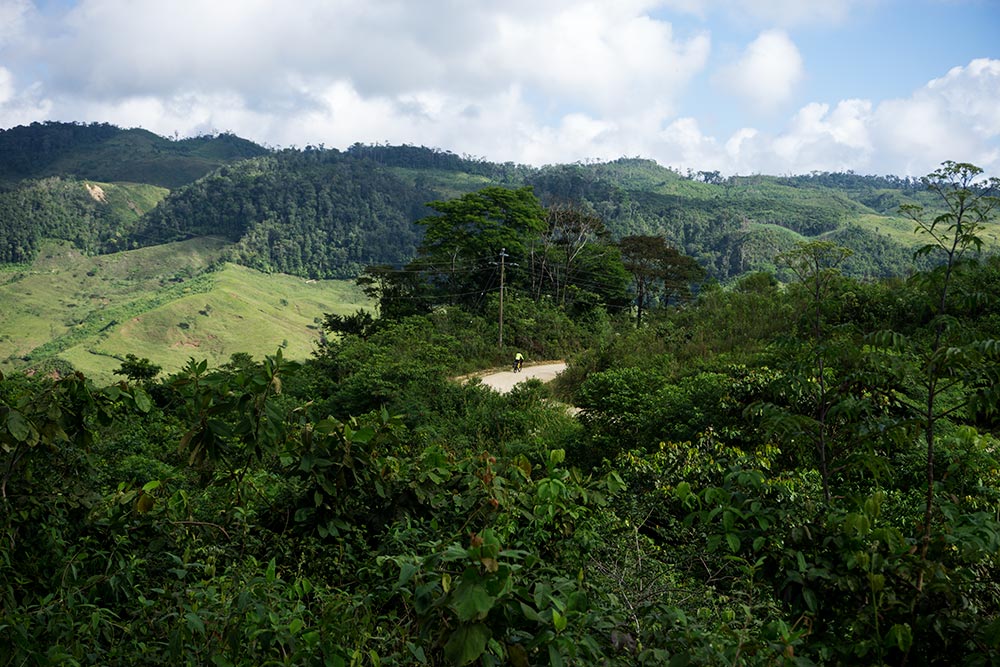
“Hey, Rebecca, you ride down there and I’ll stay here and take your photo.”

Rebecca has a camera too!
Our ultimate destination for this leg of our trip was Frontera Corozal and we reached it on our 6th day out of San Cristobal. This final day was the only one where we did have a bit of flat riding, and our legs were certainly appreciative of this. Almost all of the elevation that we had worked so hard to achieve on previous rides had been given away, leaving us only a hundred or so meters above sea level. Both the temperature and humidity had increased significantly, a telltale sign that we were no longer in the mountains.
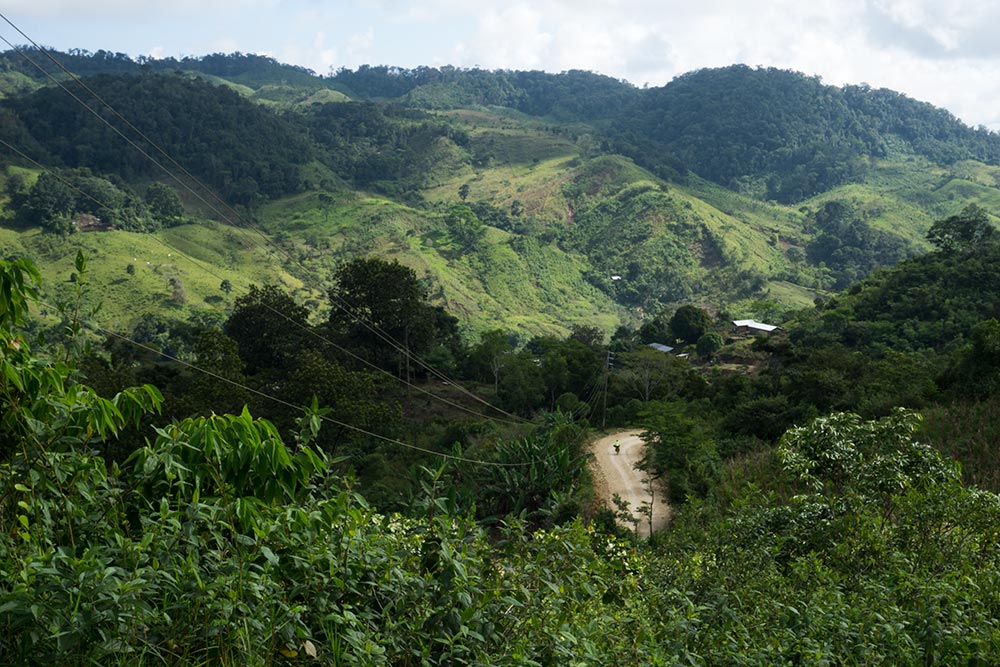
Only steep switchbacks give photo opportunities like this.
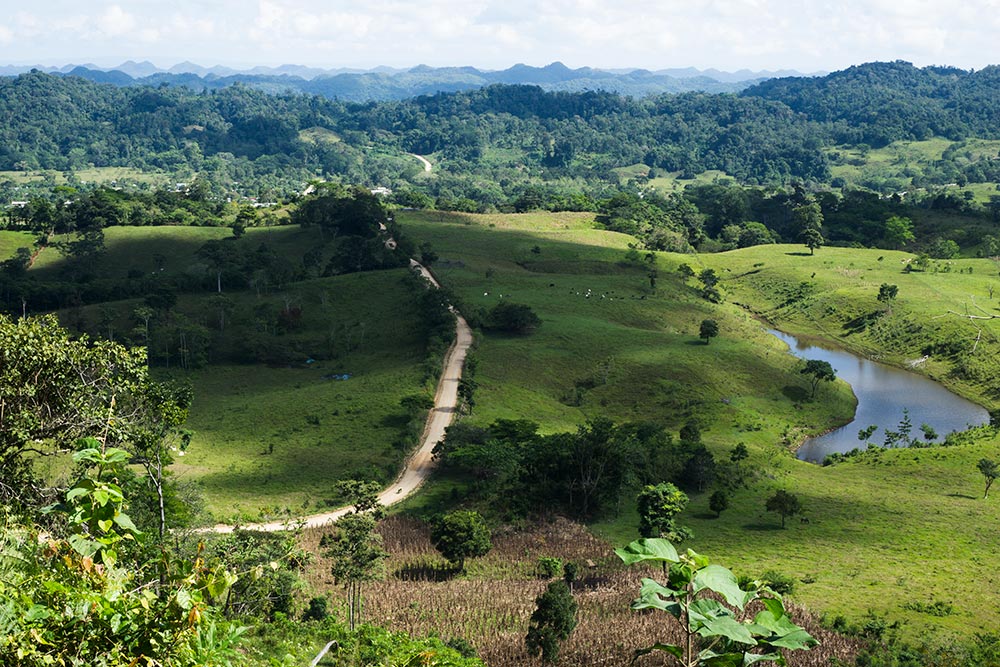
Can you spot Rebecca way down there?
Frontera Corozal lies along the Rio Usumacinta, a fast-flowing river that separates Mexico from Guatemala. Our intention was to follow our friends’ lead and cross to Guatemala the following day by hiring a launcha, a longboat, to ferry us across the water. In a rare act of decadence, we splurged on the most expensive accommodations that one of the hotels there had to offer, a private cabaña. Total price? Only 700 pesos. That’s very expensive compared to what we’d normally spend but it still only works out to about $38.00 US. Expensive but in my opinion, a reasonable treat for our last night in the country.

We still had plenty of hills remaining. Flat, the road was not!

A couple of (intoxicated?) teens told us that a car had, at one point, driven off this bridge into the churning water.
Wanting to get an early start the following day, after checking in to the hotel, we paid a visit to the immigration office in Frontera Corozal, hoping to get our passports stamped so that we could leave. We were not really aware of what the procedure would be and when the man behind the glass said something about 500 pesos, I was initially puzzled and concerned because we had very few pesos remaining. After hesitating for a few seconds, I remembered the receipts that, just that morning, I had found and tucked into my camera bag, each of them showing that we had both paid 500 pesos when we entered the country. When I handed him the two receipts, that satisfied him but it seemed strange that it was even necessary. It was obvious that we had already paid that amount of money since we had the tourist cards we were given when we first crossed the border. My thought was then, and it has since been confirmed by others, that if we had not been able to provide the receipts, we would have been required to pay that amount of money a second time!
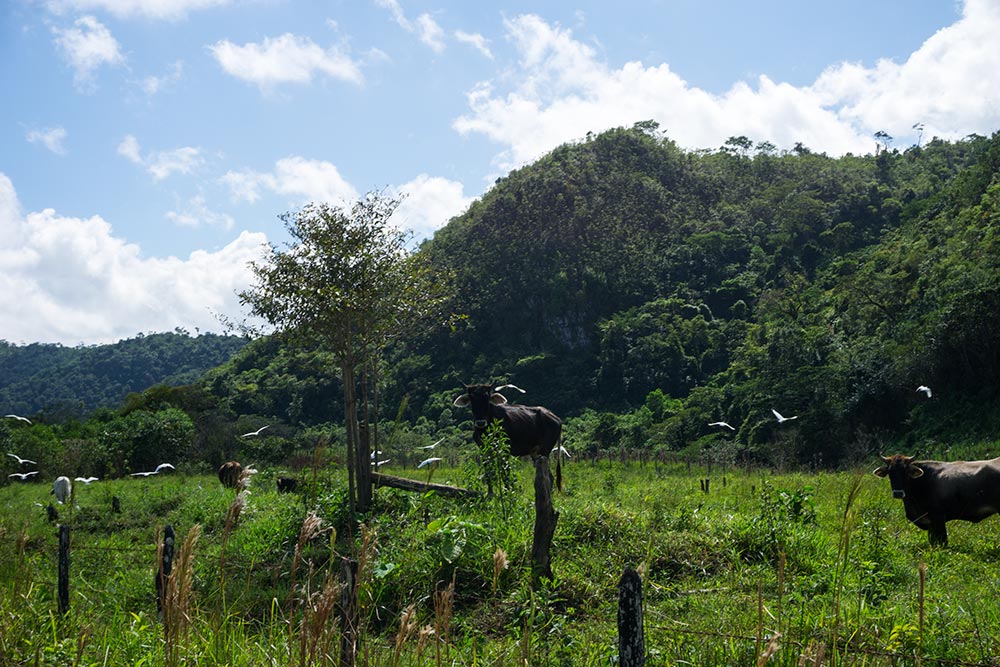
Birds and bulls (or cows, I didn’t look that closely).

Plastic pollution. Grrr!
After dealing with that hurdle, inexplicably, when the officer then examined my passport to stamp it for our exit, there was no entry stamp from when we had entered the country back in June. He acted as if he was going to make a big deal of it but I kept repeating, “No se por que,” I don’t know why (there is no stamp). After a while, he seemed to grow bored with our exchange and stamped our passports to let us go. Formalities completed, we were then legal to say goodbye to Mexico.
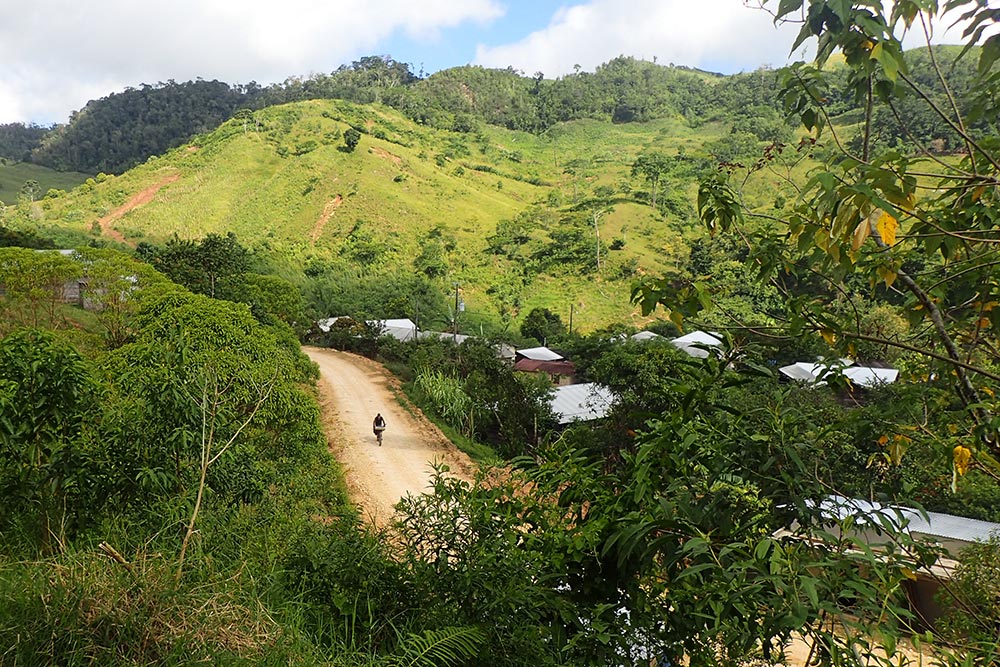
One of many fast and fun descents.

Moments after leaving the immigration office, we came across a motorcyclist who was, given his setup, obviously out for a long-distance tour. We stopped to speak with him and learned that his name was Hans, a Swede who had been traveling all over Mexico, Central, and South America.

R is for Rebecca.

Frequently we come across hills that look as if they are going to be very steep, like this one, but turn out to be not too bad.
Later that night, we joined Hans for dinner, and it was a real treat for us to hear about his story. Hans lives 6 months of the year back home in Sweden where he works as a ski instructor. He leaves his motorcycle in Mexico so that he can come back each year and travel. We have a few friends who are avid motorcyclists so I hope they take this as inspiration to get out and do the long-distance trips that they have been dreaming of!

The Jaguars are so fierce, they even destroyed the sign warning of their presence!
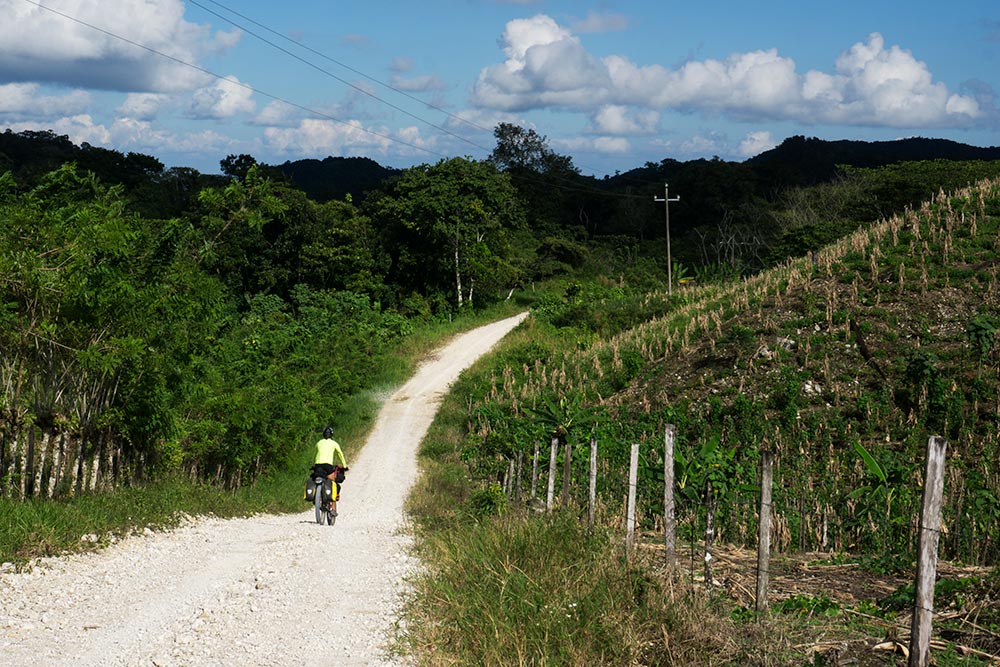
Giving up the last bit of our hard-earned elevation.

Our Mexican journey ends here.
As for Mexico, I won’t say that it has exceeded our expectations because we pretty much began our cycling journey with a blank slate in terms of what was going to happen. I will say that we could easily spend another 6 months in the country, given how large and diverse it is. I think we are extremely fortunate that in addition to the countless memories we have acquired during our travels here, we will also be leaving the country having made a number of good friends, people that I hope we’ll be able to keep in touch with and even better, see again down the road. So long, Mexico, te amamos!

A treat for our last night in Mexico!
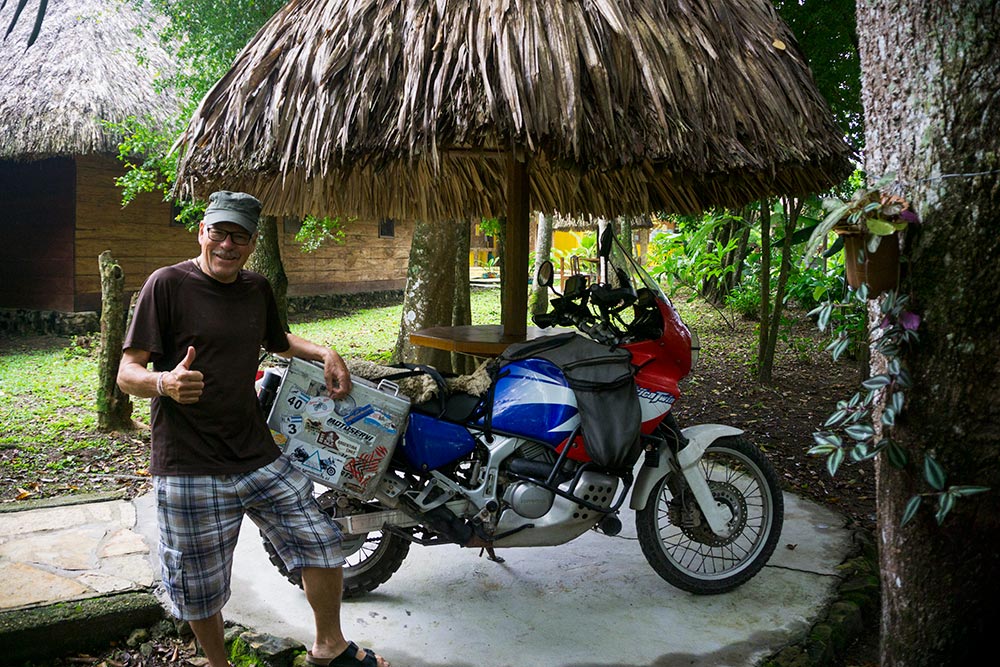
Maybe when we get to Ushuaia we’ll trade our bikes in for a couple of these?


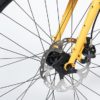
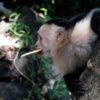
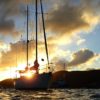

Wow, that’s a lot of content! And some amazing fotos as per usual. I spent some time in Ocosingo as well. Really enjoyed it there. Got stuck there on the side of the road for a couple of hours and ended up in a school bus with some students who were there to visit the ruins like us. Fortunately we were given a ride back to town.
Why were you stuck?
If I remember correctly, we took a bus out to the ruins and missed it going back. We got a ride to a little restaurant on the side of the road which was a couple of km from the ruins. We had a few beers trying to figure out how we’d get back when we saw a school bus approaching. We asked for a ride and they obliged! It was getting late in the day so we were lucky to get a ride back. As you guys say, one must be flexible with their plans….lol
“We had a few beers trying to figure out how we’d get back…”
Good plan.
I saw the pic of Hans’ motorcycle, any idea what make and model it is and whether he bought it in Mexico? It’s definitely the proper bike to ride in any of these countries. I would most likely go for the Kawasaki KLR 650. Just one single big cylinder. They use these when you want to rent a bike for touring around. I’m a blog member for Freedom Cycles out of Ecuador, I’d love to do a tour of that country one day. Happy riding! (Don’t forget about Lagos de Atitlan, and Panajechel, Guatemala.)
It is a Honda but I’m not sure what model. He purchased it used in Sweden and then brought it with him via ship.